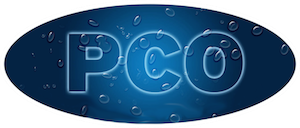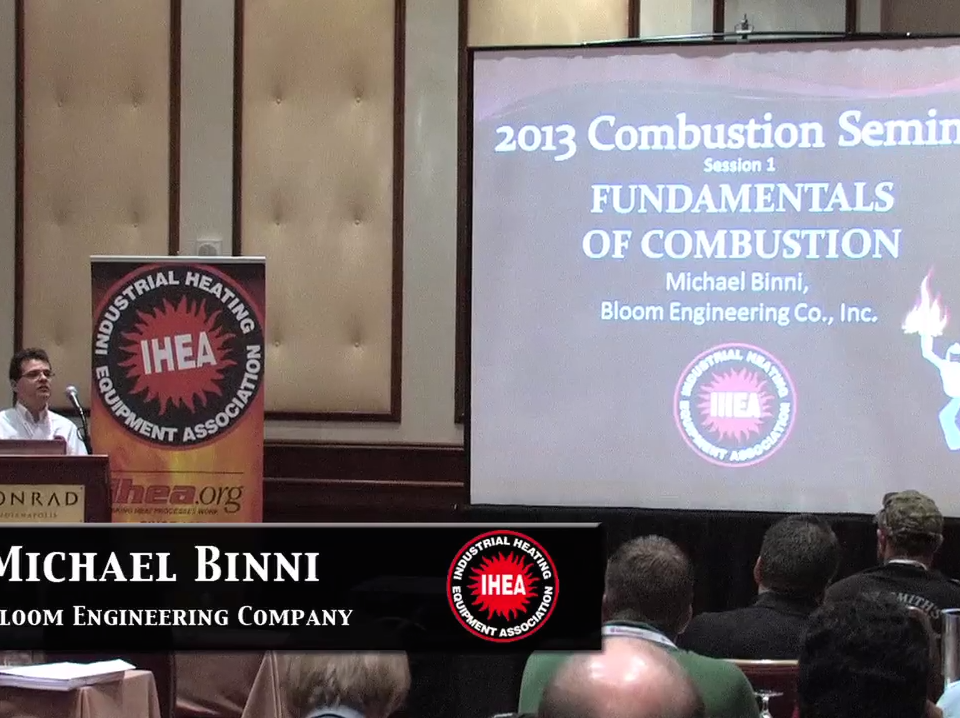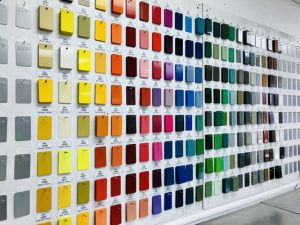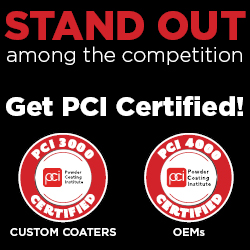Powder coating performance over time, as with ALL organic coatings, deteriorates and their performance characteristics are diminished with time. The performance of any coating depends on many factors:
1. Substrate
2. Surface condition
3. Method of application
4. Quality of material and formulation
5. Environmental conditions to which product is exposed
1. Substrate
“The structure or layer lying underneath” Substrate refers to the immediate surface that the coating material will be in intimate contact with when applied.
Different metals corrode at different rates when exposed to the elements. It is important to know and understand the base metal composition as well as the proper pretreatment layer between it and the coating material selected.
It is reasonable to assume that the more corrosion resistant the substrate material is the longer the outermost organic coating can be expected to last. For example powder coating aluminum lawn furniture will last longer than powder coating over steel lawn furniture. Likewise powder coating over zinc plated steel will last longer than powder coating over raw steel.
2. Surface condition
The condition of the surface is a very important factor in the life expectancy of the finish. Mill scale, rust, oxidation, bad plating, welding slag, burnt on oil or grease, hard rinse water deposits, or any other surface contamination will have an adverse effect on the total life of the selected finish.
3. Method of application
The application process can be controlled by a number of factors. Powder can be applied by means of fluid bed, electrostatic fluid bed, electrostatic spray, or flocked on by preheating the part. Thickness of the coating, temperature of the substrate at time of application, as well as the oven dwell time and temperature of the process all play an important part in the total quality of the final finish.
4. Quality of material and formulation
Powders can be formulated for a great variety of purposes. The selections are many and knowledge of their performance characteristics will help in choosing the proper material for the application at hand.
Choice of resin system, hardener, and pigment is just the beginning in selection the properties that one may require of the finish. Control of gloss, smoothness, flow rate, cure rate, ultra violet resistance, chemical resistance, heat resistance, flexibility, adhesion, corrosion resistance, exterior durability, ability to be reclaimed and reused, total first time transfer efficiency, and more, are some of the factors that must be considered when any new material is manufactured.
Thermosetting powder coatings are classified into five basic chemical groups – EPOXY, EPOXY-POLYESTER, commonly referred to as HYBRID, POLYESTER-URETHANES, TGIC-POLYESTER, and ACRYLIC. The specific uses for each chemistry are varied, and often “cross over” depending on customer specifications and performance criteria.
Epoxy powders are noted for their excellent chemical and corrosion resistance. These coatings have a wide range of formulation latitude in that they can be customized to meet thick film functional or thin film decorative end uses. Known as being a flexible but tough coating, the only drawback to Epoxies is their lack of ultra violet tolerance.
Epoxy-Polyester chemistries, or Hybrid, exhibit some of the best transfer efficiencies of all thermoset powder coatings.
In some cases, they may be as flexible as Epoxy types, but lose some hardness and chemical resistance because of the Polyester component. Also, like Epoxies, Hybrids exhibit poor weathering characteristics.
Urethane-Polyester coatings are best utilized in thin film (1.0-3.0 mil) applications. Above this range, Urethanes may tend to haze, outgas or pinhole due to the small amount of volatiles coming off the curing agent in the system. However, if thickness parameters are controlled, Urethanes provide a tough, durable film surface with excellent surface smoothness, flexibility, and exterior weathering characteristics.
TGIC-Polyesters represent the fastest growing area in thermoset technology. This growth may be attributed to the chemistry’s overall performance ratings in physical and chemical properties, application or transfer efficiency, and excellent Ultraviolet resistance. Also, TGIC-Polyesters can be applied at relatively thick films (6+ mils) without volatile entrapment or out-gassing.
Acrylics represent the smallest share of the thermoset market possibly because of the number of resin suppliers and acrylic powder producers, and the incompatibility problems sometimes encountered when using these systems interchangeably with the other thermoset chemistries. However, pure Acrylic powders are characterized by excellent film appearance, flexibility, and hardness. They are also classified as weatherable systems.
5. Environmental conditions to which product is exposed
The severity of the atmospheric conditions in which the finished product is exposed is also an important factor when trying to determine the life expectancy of any organic finish. It was stated earlier that all organic coatings deteriorate with time.
The amount of time it takes to break down an organic coating is directly related to the severity of the environmental conditions in which the finish is exposed. For example, a car finish, when properly cared for, can be expected to last a lifetime. On the other hand if the same car is never washed or waxed, left out in the rain sleet and snow of the winter, and exposed to the damaging heat and ultraviolet rays of the sun in the summer, the finish would have little chance of lasting more than a couple of years.
Related Resources
- Building Environment Enclosures
- Engineered Buildings
- Powder Coaters Corner
- Powder Coating Industry Research
- Contact







